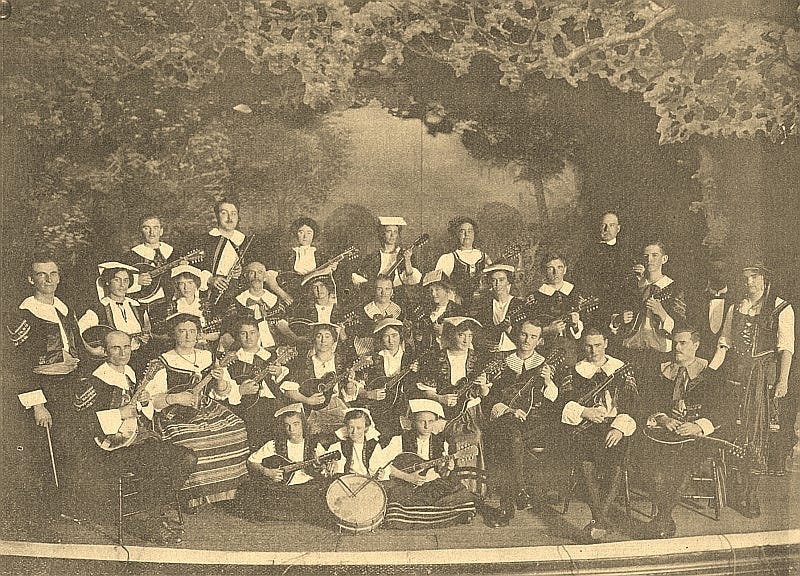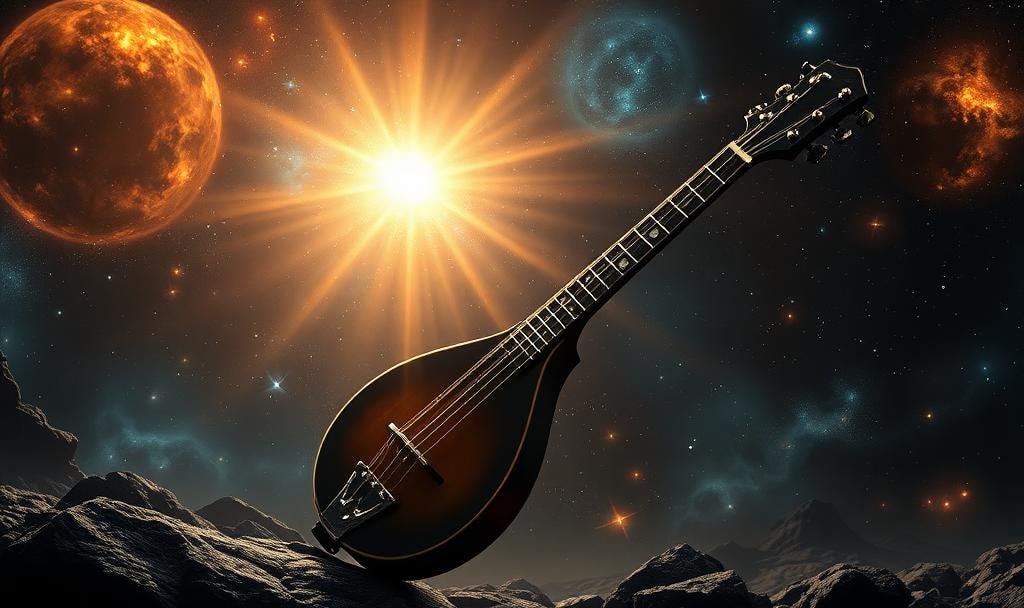I picked up the mandolin for the first time in college. A folk-singer I had been playing for asked me if I could play it on one of her songs, and I said (truthfully) that I had no idea, and borrowed one and tried it and found I could, in a manner of speaking.
Which was fortuitous for me: you can’t throw a brick without hitting a guitar-player who’s better than you are, but in a lot of jam-sessions, mandolins will be thin on the ground.
They add a layer of emotion to music, so much so that a very dear friend once asked me, for her birthday, to add a mandolin part to The Archies’ “Sugar, Sugar” and “Ain’t No Sunshine.” Which, of course, I did. Friends that ask for things like that are extremely rare.
The ballsy folk-rock genius Mark Heard took to the stage with nothing but a mandolin now and then when people expected rock and roll, and somehow he gave it to them, turning the twanging tight eight-strings-in-four-courses into rhythmic blues.
(I’m writing this post after spending a half hour learning the mandolin riffs to his “Tip of My Tongue.” But a better example is “What Kind of Friend,” which feels like he wrote it and recorded it at three in the morning. Give it a listen and just filter out everything but the mandolin, and you’ll be hearing the motivation for this post.)
But for most of us with less testicular fortitude, the mandolin is seasoning in the mix, a little umami to level off a piano or guitar.
I remember once playing mandolin with a worship band; I’ve forgotten the song we had just finished, but it would have been one of those endlessly repeating emotional choruses that go on like a mantra until people achieve a level of sufficient emotion to believe they’ve encountered the Most High. I got cards for that.
Now is not the place or time to investigate the manipulative emotional power of music; see Plato’s Republic if you are athirst for such things. Today I’m inclined to just say, “Yes, that was God you felt.”
When talking about music, poetry or drama, I’m not the man to make fine distinctions between the divine and the limbic system.
I’ve got a book on the history of the mandolin on my shelves, and one of the more hysterical and moving features of it is the rave for mandolin clubs in the late 19th and early 20th centuries.

Virtually every college in America had a gang of mandolinists who met to discuss and play the mandolin. (If you’re wondering what humanity did for entertainment before television and the Internet were invented, it’s a profoundly interesting area of study.)
Anyway, if you’re already an enthusiast, no more words are necessary, and if you aren’t, no words will be sufficient. I commend to you the eight-string lyre of American folk-music, imported from Italy and a terrific case for musical globalization.




